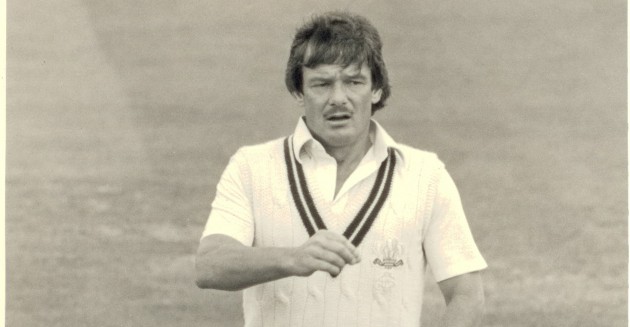When Leicestershire arrive at Guildford on Tuesday, it will be only the county’s second List A encounter at Woodbridge Road, coming half a century after the first. Richard Spiller looks back at the first meeting on August 20 1972.
Limited overs cricket came late to Guildford. The town has claimed a place in history for being where the game was first officially noted – court proceedings in 1598 referring to a match from around 50 years earlier – and the first-class breakthrough took place in 1938 when Hampshire visited.
The inaugural one-day competition, the Gillette Cup, started in 1963 and limited overs cricket in England broadened six years later with what was initially called the John Player’s County League (which became known as the JPL), which took place on Sundays with 40 overs per side. Woodbridge Road’s first taste of the JPL came in 1970, Gloucestershire winning by eight wickets while Hampshire were beaten 12 months later by 21 runs.
Surrey had finished fifth in the first year of the new league but were patchy after that, their energies directed more on the County Championship, Micky Stewart leading the way to the first title since the glorious 1950s by the slimmest of margins in 1971.
There was no doubting Leicestershire’s growing proficiency in one-day cricket, honed by skipper Ray Illingworth alongside his responsibilities as England captain.
He had led them to victory in the first-ever Benson & Hedges Cup earlier in the 1972 season, beating his native county Yorkshire at Lord’s to earn the Grace Road club’s maiden trophy.
Now they were aiming for a double, where they had finished fourth the previous summer.
They were in a four-way fight for the title with Kent, Essex and Yorkshire, with Surrey looking on from mid-table.
The clash at Guildford came in late August, with just two rounds to follow, but the Foxes were without Illingworth, who had sprained his right ankle earlier that week while playing for England at The Oval in their defeat over six days to Australia, having already retained the Ashes.
Stewart, whose career was in its final month, saw his acting opposite number Roger Tolchard call incorrectly, so chose to bat first, hitting 40 out of an opening partnership with John Edrich, who had also been on Test duty and made 53. But the only other batsman to make much progress was Younis Ahmed, whose 35 included hitting a six out of the ground, despite the late intervention of hard-hitting Pakistan captain Intikhab Alam (18)
Leicestershire’s experienced new ball pair Graham McKenzie (1-25) and Ken Higgs (2-23) had the greatest success. Some bowlers disliked the JPL rule which restricted run-ups to 15 yards, designed in order to speed up over-rates, but most adjusted and on this day Geoff Arnold and Robin Jackman made life particularly difficult for the visitors.
Jackman bowled Barry Dudleston for five but they had to wait until the score had reached 97 for the next breakthrough, when off-spinner Pat Pocock removed Mick Norman for 32 courtesy of a catch from Stewart.
It was wicketkeeper Tolchard, whose batting earned him four Test caps, who was proving the key as he hit 83 but he could gain little support down the order. Jackman returned to remove him as he claimed 2-12 from eight overs, Arnold’s 1-20 and Pocock’s 2-36 also holding back the chase.
But Graham Roope’s eight wicketless overs cost him 47 and Stewart Storey, despite removing John Steele (11) late on, could not prevent Leicestershire getting home by four wickets with one ball to spare.
That victory was not enough to help them to the title, though, finishing in second place as Kent topped them by a point. Surrey took 10th position.
It’s not just half a century which will separate that encounter with its successor. Royal London matches are 10 overs longer, involving powerplays and fielding circles, bowlers now using a white ball and allowed to run as far as they like. Everyone wears coloured kit.
It may be the same game but not possibly would not be recognised by those involved in the early days of one day cricket.











